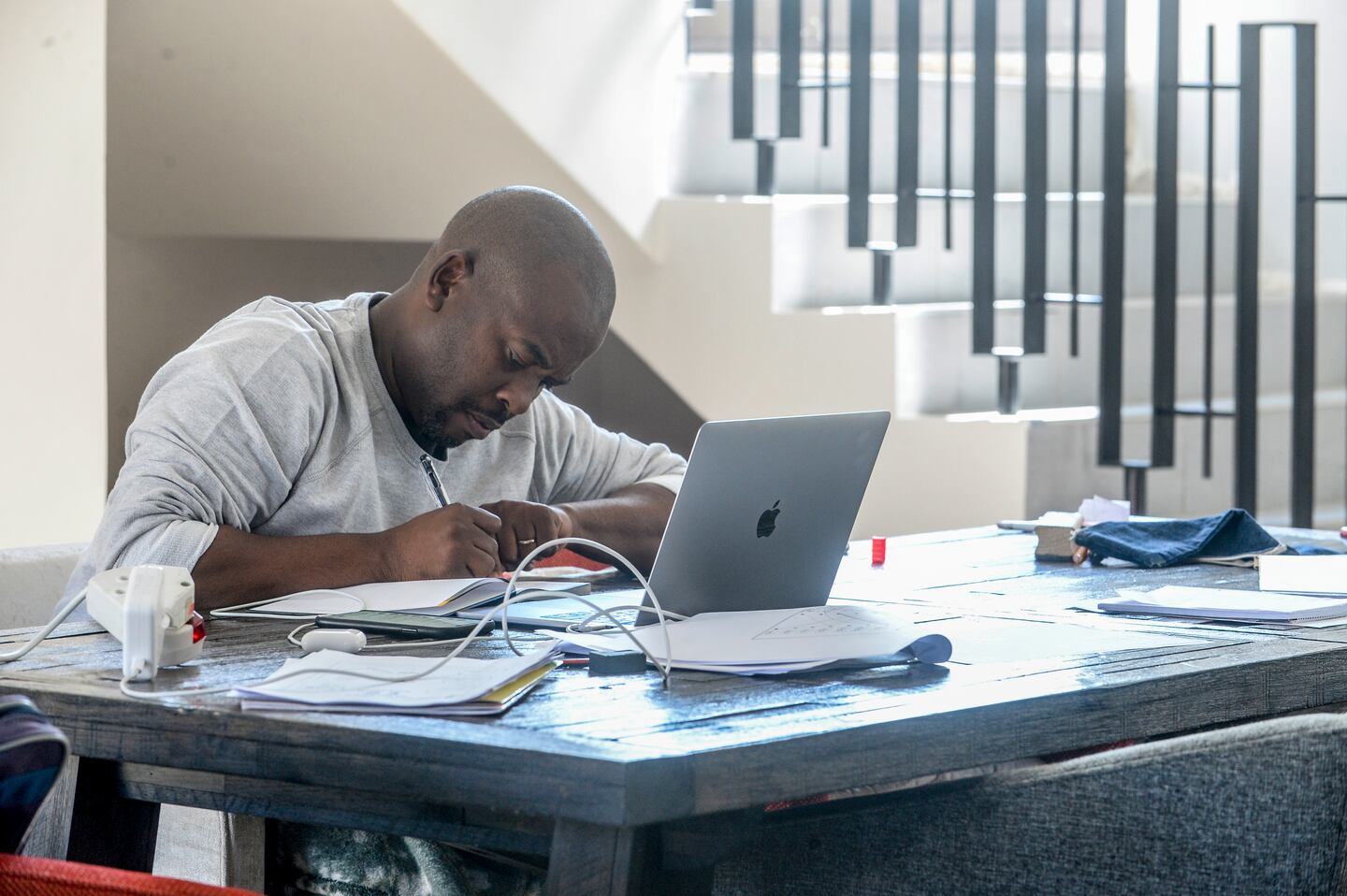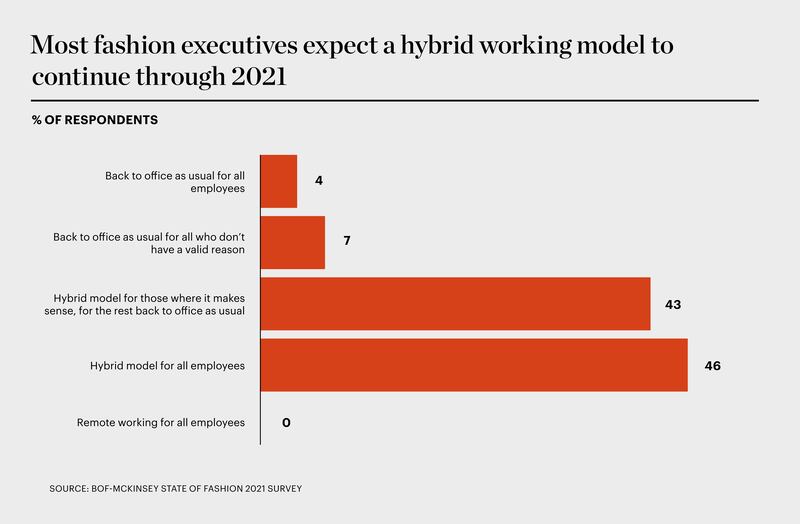
The Business of Fashion
Agenda-setting intelligence, analysis and advice for the global fashion community.

Agenda-setting intelligence, analysis and advice for the global fashion community.

This article appeared first in The State of Fashion 2021, an in-depth report on the global fashion industry, co-published by BoF and McKinsey & Company. To learn more and download a copy of the report, click here.
The pandemic has had a dramatic impact on fashion industry employment. Many jobs have been lost — and many more are at risk — across all industry functions, from the factory floor to stores on the world’s most exclusive shopping boulevards. In August 2020, the UK saw the lowest retail employment levels since 2009, while the US reported that more than 2 million retail jobs had been lost due to coronavirus.
Other factors could contribute to higher unemployment levels across the industry next year, as brands conduct store network reviews and companies in a variety of fashion industry sectors feel the pressure from tighter budgets. Luxury brands, for instance, have cut advertising spend by as much as 80 percent, and US model agency revenues are estimated to see a 7.5 percent decline in 2021. Across functions, recent graduates and young professionals will continue to be severely impacted by the crisis as many job opportunities have either disappeared or remain on hold. And for those who do remain in gainful employment, many are witnessing profound changes to the way that they work.
In an industry where in-person interaction and long-distance travel have long been of paramount importance, fashion companies have shown resilience since the start of the crisis by translating their traditional ways of working to the online environment. Social distancing measures and the inability to travel have accelerated the shift to digital in design, product development, buying, sell-in and more. Tools such as virtual sampling, digital material libraries and 3D rendering of collections for sales, which weren’t broadly used before the pandemic, have increasingly become the norm.
ADVERTISEMENT
90 percent of fashion executives anticipate that hybrid working will become the norm in 2021.
Similarly, the reinvention of trade shows and showrooms predicted in our “Unconventional Conventions” theme last year took off quicker than expected, as seen in the adoption of a number of innovations like digital trade hubs, marketplaces and fashion shows. For instance, 220,000 attendees joined the digital edition of key Latin America fashion fair ColombiaModa in July 2020, during which more than 4,000 digital appointments were scheduled. Some of the solutions offered by companies for these new formats are even being monetised. PVH’s self-built virtual showroom Hatch, for example, has now become a standalone B2B tool which is offered to other fashion players.
As the pandemic has called into question the role of the physical workplace, fashion companies must balance business efficiency with employees’ needs and preferences, creating a new hybrid work model that supports organisational priorities. Around 90 percent of fashion executives answering our BoF-McKinsey State of Fashion 2021 Survey anticipate that hybrid working will become the norm in 2021 (see Exhibit 13). Hugo Boss announced in August 2020 it would allow employees to work remotely two days per week, following the results of an internal survey in which more than 90 percent of respondents had asked to switch to a hybrid model. In July, apparel group G-III was forced to postpone its date of return to the office after many employees complained about not being able to continue remote working.
Work location, however, is just one of the many questions that fashion businesses must answer to prepare for the future of work. Another major challenge is the need for reskilling, as the pandemic has highlighted the importance of certain roles over others and certain areas of responsibility within roles. As entirely new skill needs continue to emerge next year, fashion companies will either have to develop them in-house or acquire them by recruiting. Fashion schools expect the weight of digital and analytics skills, for example, to increase significantly in their curricula, as a result of higher demand from fashion employers.

Interestingly, some of the skills gaps that exist within fashion companies may be filled by hardwiring remote working practices and thereby tapping into a global — rather than local — talent pool. Swedish underwear brand CDLP, for instance, already announced it plans to hire 50 percent of its staff outside of Stockholm, which means those employees could work remotely in fashion hubs like Paris, London and New York or much further afield. As proximity to the workplace becomes a less critical factor for employment, fashion firms also now have the opportunity to reach their diversity and inclusion (D&I) goals by overcoming location bias. With 27 percent of diversity efforts put on hold during Covid-19, fashion executives need to urgently revive D&I as a priority.
The talent mix is also likely to change next year. In the reskilling process, some firms may try to increase their workforce flexibility and limit employee costs by increasing their reliance on freelancers and contractors. Across industries, one Gartner survey showed that 32 percent of organisations were replacing full-time employees with contingent workers, as a cost-saving measure. If the trend confirms itself this could lead to a further fragilisation of fashion workers, in an industry already highly reliant on contingent work in roles such as models, stylists and photographers.
Another area revolutionised by the legacy of the pandemic’s restrictions will likely be the social role played by companies and the importance of the workplace in building social capital and maintaining social cohesion. The rise of digital nomadism — whereby employees can work from anywhere in the world and do not have one fixed workplace — is not optimal for all. Some people have suffered from poor mental health, loneliness and a lack of social interaction, as shown by a cross-industry survey ran by The Martec Group in which 42 percent of remote workers said their stress levels had risen since working from home. The risk is even greater in an industry like fashion, where there has historically been a high reliance on interpersonal connections, networking and collaboration. In this context, the physical workplace could still play an important role in the future as a space for dispersed employees to meet in real life.
Regardless of the recovery timeline, the new operations of the fashion industry emerging from the crisis will be radically more digital than in the past and will require new pools of skills. The year ahead offers opportunities for fashion executives to introduce skill sets that drive value in their future business models. To benefit from the work revolution that the pandemic has accelerated, executives will also need to upgrade business processes in order to prioritise the recruitment and upskilling of talent to fill these gaps. The key for many fashion companies will be to invest not only in urgent training programmes but also in employees’ longer-term learning journeys.
At the same time, C-suite executives should work with human resource departments to formalise a new hybrid model of working as soon as possible — one that achieves the right balance between stakeholder preferences and business requirements. Given the destabilising impact of the pandemic, fashion companies will be challenged to foster a strong collective spirit and organisational culture. To make sure that they do, company leaders will need to double down on their mission and values, while committing even more to representation in the workplace.
The State of Fashion 2021 Report: Finding Promise in Perilous Times
The fifth annual State of Fashion report forecasts the continuation of tough trading conditions for the global fashion industry in 2021. Changing consumer behaviour and shifting markets will force companies to find their 'silver lining strategies' to unearth digital innovation and reimagine physical retail. Explore the 10 themes that will define the state of the fashion industry in 2021 and how to navigate uncertainty while unlocking new opportunities in the sector’s recovery.
Explore the full report here.
1.
Learning to Live with the Virus
2.
Diminished Demand Is Here to Stay
3.
The Digital Sprint Will Have Winners and Losers
4.
Consumers to Seek Justice in the Supply Chain
5.
Travel Disruption Will Redraw the Fashion Map
6.
Less Is More for Both Consumers and Brands
7.
Fashion Is Set for a Surge in M&A
8.
Keep Your Suppliers Close
9.
Rethinking Retail ROI
10.
The WFH Revolution Will Rewire the Workplace
BoF Careers provides essential sector insights for fashion designers this month, to help you decode fashion’s creative and commercial landscape.
This week, talent expert Suki Sandhu OBE and advisor and executive search consultant Karen Harvey shared insights on the core skill sets expected of leaders and managers in the fashion industry today. BoF Careers shares key learnings from the event.
Discover the most exciting career opportunities now available on BoF Careers — including jobs from Ermenegildo Zegna Group, JW Anderson and A-Cold-Wall.
BoF spoke to HR executives and talent experts at Alexander McQueen, On and Deckers Brands — global employers currently recruiting on BoF Careers — to understand what skills are most relevant to the fashion industry and how to upskill in them in the workplace.